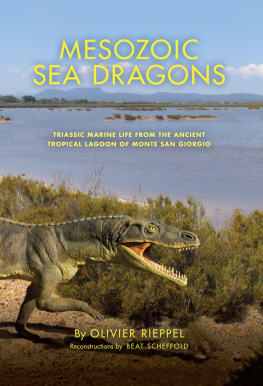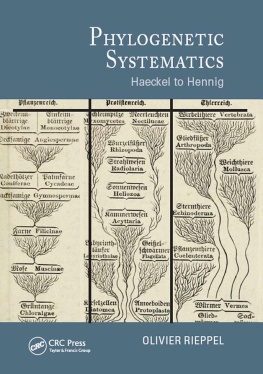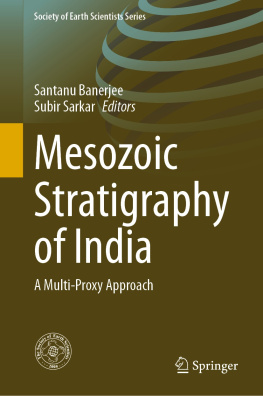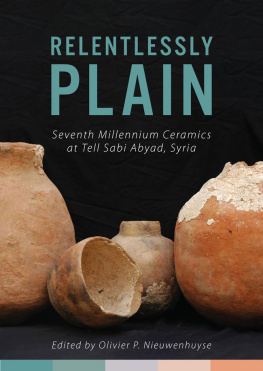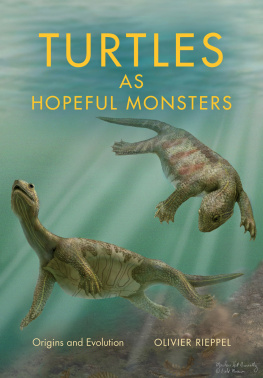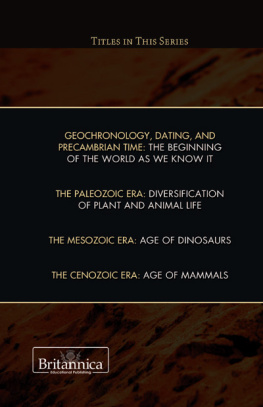Olivier Rieppel - Mesozoic Sea Dragons
Here you can read online Olivier Rieppel - Mesozoic Sea Dragons full text of the book (entire story) in english for free. Download pdf and epub, get meaning, cover and reviews about this ebook. year: 2019, publisher: Indiana University Press, genre: Detective and thriller. Description of the work, (preface) as well as reviews are available. Best literature library LitArk.com created for fans of good reading and offers a wide selection of genres:
Romance novel
Science fiction
Adventure
Detective
Science
History
Home and family
Prose
Art
Politics
Computer
Non-fiction
Religion
Business
Children
Humor
Choose a favorite category and find really read worthwhile books. Enjoy immersion in the world of imagination, feel the emotions of the characters or learn something new for yourself, make an fascinating discovery.
- Book:Mesozoic Sea Dragons
- Author:
- Publisher:Indiana University Press
- Genre:
- Year:2019
- Rating:3 / 5
- Favourites:Add to favourites
- Your mark:
- 60
- 1
- 2
- 3
- 4
- 5
Mesozoic Sea Dragons: summary, description and annotation
We offer to read an annotation, description, summary or preface (depends on what the author of the book "Mesozoic Sea Dragons" wrote himself). If you haven't found the necessary information about the book — write in the comments, we will try to find it.
Mesozoic Sea Dragons — read online for free the complete book (whole text) full work
Below is the text of the book, divided by pages. System saving the place of the last page read, allows you to conveniently read the book "Mesozoic Sea Dragons" online for free, without having to search again every time where you left off. Put a bookmark, and you can go to the page where you finished reading at any time.
Font size:
Interval:
Bookmark:
Table of Contents
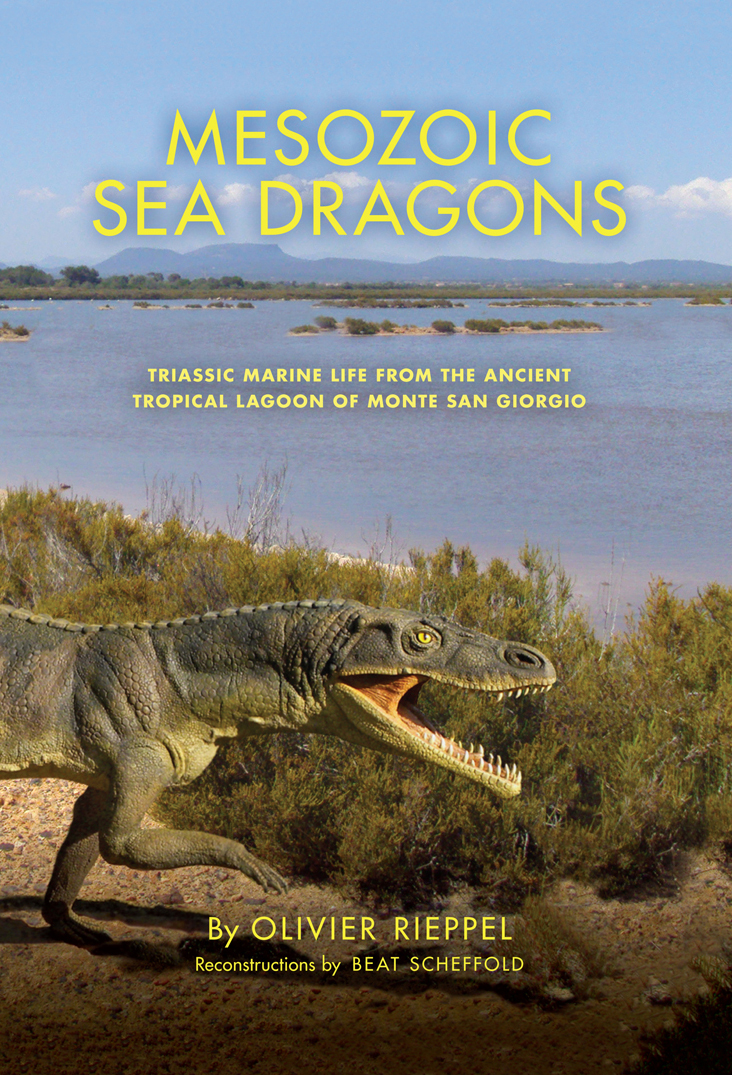
Mesozoic Sea Dragons


This book is a publication of
Indiana University Press
Office of Scholarly Publishing
Herman B Wells Library 350
1320 East 10th Street
Bloomington, Indiana 47405 USA
iupress.indiana.edu
2019 by Olivier Rieppel
All rights reserved
No part of this book may be reproduced or utilized in any form or by any means, electronic or mechanical, including photocopying and recording, or by any information storage and retrieval system, without permission in writing from the publisher. The paper used in this publication meets the minimum requirements of the American National Standard for Information SciencesPermanence of Paper for Printed Library Materials, ANSI Z39.48-1992.
Manufactured in the United States of America
Cataloging information is available from the Library of Congress.
ISBN 978-0-253-04011-4 (hdbk.)
ISBN 978-0-253-04013-8 (web PDF)
1 2 3 4 5 24 23 22 21 20 19
Contents


I am very grateful to the Series Editor, James O. Farlow, as well as Gary Dunham, Peggy Solic, and Mary Jo Rhodes from Indiana University Press, who helped to see this book through publication. Christian Klug, and Torsten Scheyer from the Paleontological Institute and Museum of the University of Zrich, as well as Tony Brgin (St. Gallen), Markus Felber (Morbio Inferiore, Ticino), Nicholas C. Fraser (Edinburgh), Heinz Furrer (Zrich), Hartmut Haubold (Halle/Saale), Heinz Lanz (Winterthur), Hans Rieber (Zrich), Christopher R. Scotese (Evanston, IL), Giorgio Teruzzi (Milan), Karl Tschanz (Zrich), the Archivio Sommaruga, the Commissione Scientifico Transnationale Monte San Giorgio, and the Fotostiftung Schweiz all helped and supported the book project in various ways, especially by providing illustrations. John Weinstein (photographer) and Marlene Donnelly (scientific illustrator), both at the Field Museum, improved the quality of the illustrations. Sincere thanks to all of these friends and colleagues.
Mesozoic Sea Dragons



1.1. The field crew at the Acqua del Ghiffo site in 1928. From left to right: Emil Kuhn, Giuseppe Buzzi, Sergente Buzzi, Vittorio Marogna, Bergum (a citizen of Meride), T. Bresciani, B. Bianchi (digital rendition Heinz Lanz; Photo Max P. Linck / Fotostiftung Schweiz).

Bernhard Peyer
It had been a hot day, in spite of the surrounding trees, which offered speckled shade. But the team of paleontologists had managed to clear another slab of Triassic fossiliferous sedimentary rock from the overburden. In the oblique light of the late afternoon, the contours of several promising fossils could be made outsome fish, several other small, lizard-like pachypleurosaurs. No larger fossils were found that day. They had circled the fossils with white chalk lines and planned to cut them out the next day. Then they would further expand their dig in the following days and weeks, when they would hit it big! The find would be a complete skeleton of a new lariosaur genus and species, 104 cm in total length (small by comparison to other, later finds of the same species), which Peyer christened Ceresiosaurus calcagnii, in honor of Commendatore Emilio Calcagni (Peyer, 1931a). Calcagni was the landowner who had graciously allowed excavations to proceed since the spring of 1927, when Peyer first found fossils at this locality. Peyer derived the genus name, Ceresiosaurus, from the local name for Lake Lugano, which embraces the eastern, northern, and western flanks of the northward-jutting pyramidal mountain; the team was working on the western slope of this mountain, some way above the Italian lakefront town of Porto Ceresio. Satisfied with the digs progress, Peyer poured himself a strong coffee, espresso really, from his Thermos flask. To complete what he called the trimming of a fossil find, the coffee was to be accompanied by a shot of Grappa del Ticino, a spirit distilled from pomace of Merlot, the signature grape of the Canton Ticino, Switzerland.
Peyer sat down and proceeded to stuff his pipe, looking at his crew of workers through his rimless spectacles. Absent-mindedly, he picked up a chestnut, one of the first to have ripened this season. The Ticinesi, the local inhabitants of the Canton Ticino, collect them in the fall to roast over fire or glowing charcoal. Some would travel to northern cities in SwitzerlandLucerne or Baselto sell their freshly roasted Marroni on the streets. With all the excitement of fossil hunting, Peyer had not realized how hungry he was. He looked forward to ordering braised rabbit with polenta for dinner at the local Grotto, the Ristorante Alpino in Serpiano, paired with a bottle of the local Merlot, and followed of course by another trimmingan espresso con grappa (Kuhn-Schnyder, 1968)! It was late summer of 1928, and his team was fossil hunting at the Acqua del Ghiffo locality near Crocifisso (), on Monte San Giorgio, the latter located in southern Switzerland just across the border from Italy.
Peyer had a lean, wiry physique and was wearing baggy trousers stuck in rubber boots. During the heat of the day he had taken his jacket off and put it aside, but being the only academic on the site, he had thought it proper to keep his vest on. His hair, currently disheveled, was cut short and combed to one side. As Peyer stroked his moustache, which partly obscured his thin lips, he thought it needed trimming. Bernhard was born in the Swiss town Schaffhausen on July 25, 1885, son of the textile manufacturer Johann Bernhard Peyer and his wife, ne Sophie Frey (H. Fischer, 1963; H. C. Peyer, 1963). The parents guided their son Bernhard through the Schaffhausen school system toward graduation in a classical humanistic education. Bernhard displayed a mastery of foreign languagesand these included not just French, English, and Italian but also Latin and classic Greek. One of his preferred leisure-time activities became reading and reciting Homer, author of the Iliad and the Odyssey, in the original. But Bernhard felt equally at ease in the outdoors and developed an early interest in natural history, paleontology, and geology. He obtained his first formal training in zoology and comparative anatomy as a student of Arnold Lang (18551914), a former student, then assistant, and eventually colleague of the famous Jena zoologist and evolutionist Ernst Haeckel (18341919), also known as the German Darwin. Of Swiss extraction, Lang joined the University of Zurich in 1889, where he pursued a stellar career until his death in November 1914 (Haeckel, Hescheler, and Eisig, 1916). Peyer () studied further at the University of Munich, where he heard the famous zoologist Richard Hertwig (18501937), another Haeckel student, and forged relations that would evolve into longtime friendships with the paleontologists Ferdinand Broili (18741946) and Ernst Stromer von Reichenbach (18711952).
Next pageFont size:
Interval:
Bookmark:
Similar books «Mesozoic Sea Dragons»
Look at similar books to Mesozoic Sea Dragons. We have selected literature similar in name and meaning in the hope of providing readers with more options to find new, interesting, not yet read works.
Discussion, reviews of the book Mesozoic Sea Dragons and just readers' own opinions. Leave your comments, write what you think about the work, its meaning or the main characters. Specify what exactly you liked and what you didn't like, and why you think so.

